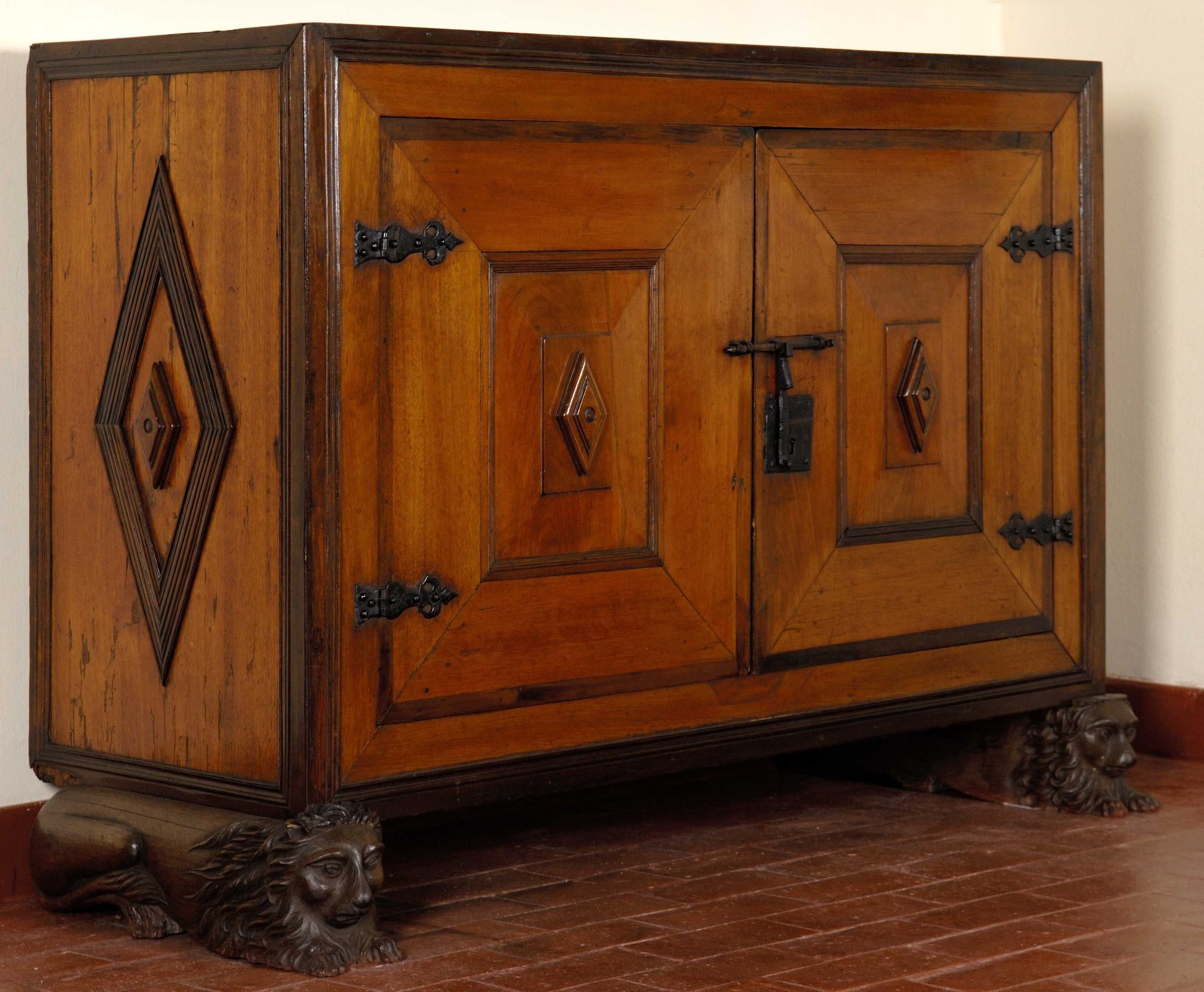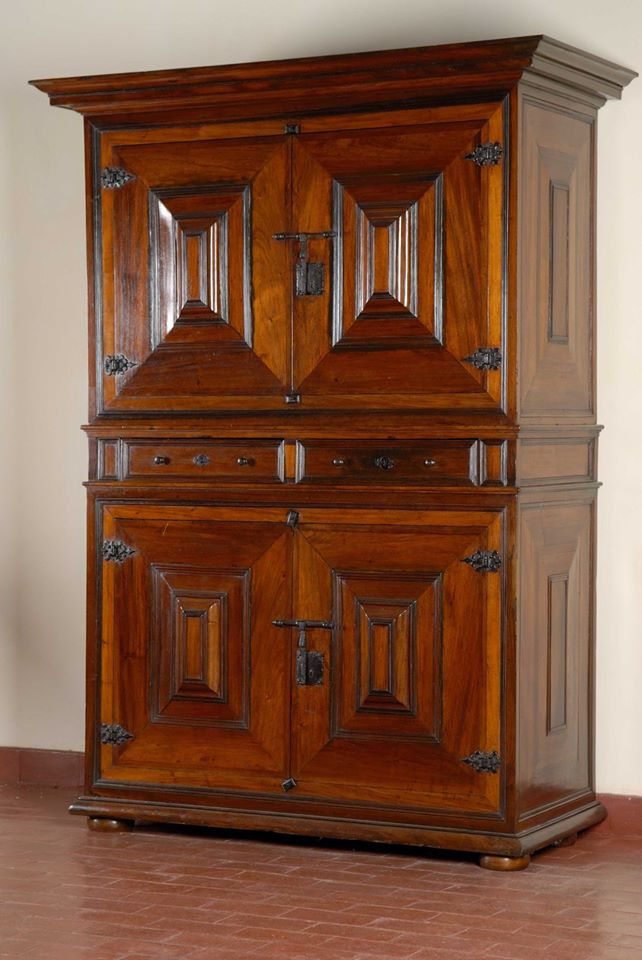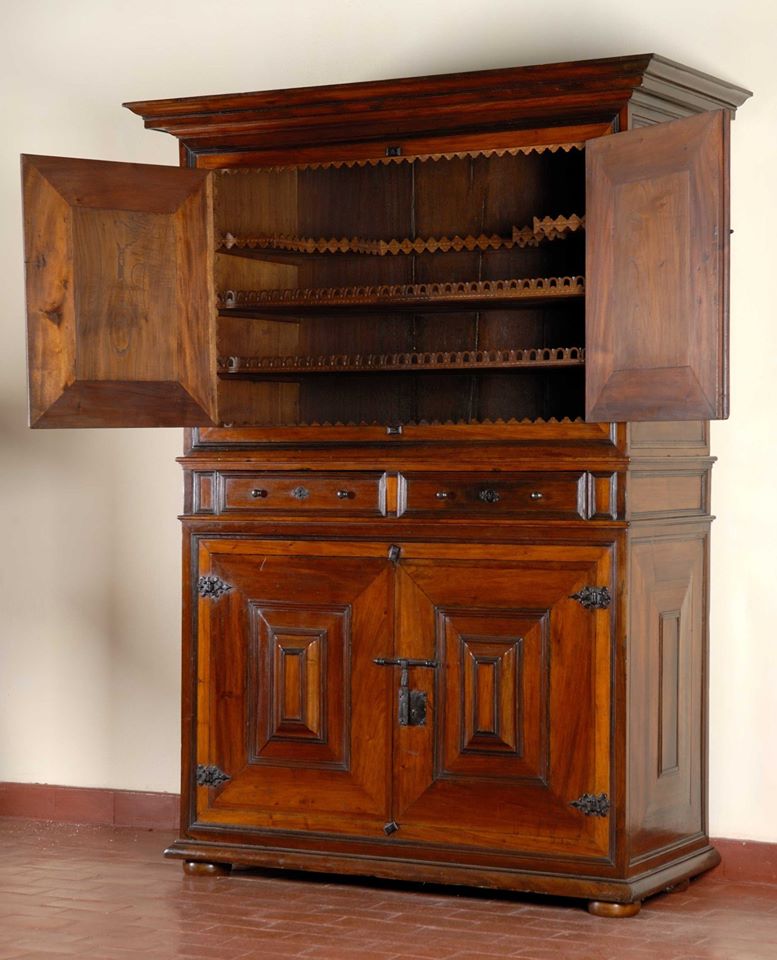The Quinta das Cruzes Museum has a furniture core, called "sugar box", dating from the 17nth century and integrating several typologies, such as one and two body cabinets, arks and angles that mostly translate into cupboards used for the storage of dishes and food.
The "sugar box" furniture of the Quinta das Cruzes Museum was studied in 1999 by Lília Esteves in an internship context at the José de Figueiredo Institute, who identified some of its woods, concluding that the "sugar box" furniture consists essentially of Brazilian tropical woods, jequitibá, imbuía, cinnamon, itaúba and tapinhoa, some of them proven to be used in the manufacture of containers exported from Brazil.
With the extinction of the religious orders and their convents (1834), and the subsequent application of the Law of Separation of the Church from the State (1911), much of the existing furniture entered into the possession of individuals, through its sale by public auction. In this particular case, the two cabinets presented here come from the initial donation of César Filipe Gomes at the time of the foundation of this museum, in 1946.
The appearance of the so-called "sugar box" furniture is closely linked to the decline of the sugar economic cycle on the island of Madeira in the mid-16th century, mainly motivated by the growing production on the islands of São Tomé and Príncipe (begun in 1493) and later in Brazil, which eventually became the main exporter to the European market.
The Brazilian "white gold" was packed and transported in boxes executed with wooden boards of overlapping joints, becoming a sturdy structure that maintained the quality of sugar breads during sea voyages to their European destination.
Madeiran joiners, in an attempt to overcome the scarcity of wood on the island, reused the wood from these boxes in the construction of the so-called "sugar box" furniture, in reference to the origin of the material used for its confection, in which regional woods are used in the structure, but covered by exotic woods from Brazil. This production is affiliated with the Dutch models published in Portugal at the end of the 16th century through the circulation of engravings. This production was not exclusive to the island of Madeira, with similar specimens documented in Lisbon and the Azores.
Credits: Quinta das Cruzes Museum

Armário “caixa de açúcar” | Oficina madeirense | século XVII | Imbuía, faveira e ferro | A. 106 x L. 144,2 x P. 52 cm | MQC 845 | © Pedro Clode, 2009
Armário de um só corpo, proveniente do Convento de Santa Clara que apresenta duas portas almofadadas, formadas por molduras retangulares que terminam em ponta de diamante. Na frente, possui ainda um ferrolho em forma de “T”, e espelho de fechadura em ferro forjado. Também as bisagras, de recortes flordelizados são em ferro forjado.
“Obras de Referência dos Museus da Madeira, 500 anos de História de um Arquipélago”; SRE/DRAC/DSM; 2009. [entrada de catálogo nº. 57]

Armário “caixa de açúcar” | Oficina madeirense | século XVII | castanho, imbuía, jequitibá e ferro | A. 206 x L. 158 x P. 72 cm | MQC 839 | © Pedro Clode, 2009
Armário “Caixa de açúcar” com portas seccionadas em almofadas e, ordem de gavetas na separação dos dois corpos. As portas são guarnecidas por ferrolhos em ferro forjado em forma de “T”, e bisagras de recorte flordelizado também em ferro.
“Obras de Referência dos Museus da Madeira, 500 anos de História de um Arquipélago”; SRE/DRAC/DSM; 2009. [entrada de catálogo nº. 58]

No interior do corpo superior possui três prateleiras, decoradas com frisos rendilhados, sendo as inferiores corridas e a superior recortada. O interior do corpo inferior possui uma prateleira corrida também decorada com friso rendilhado. Esta peça pertenceu ao Convento de Santa Clara no Funchal.
“Obras de Referência dos Museus da Madeira, 500 anos de História de um Arquipélago”; SRE/DRAC/DSM; 2009. [entrada de catálogo nº. 58]

